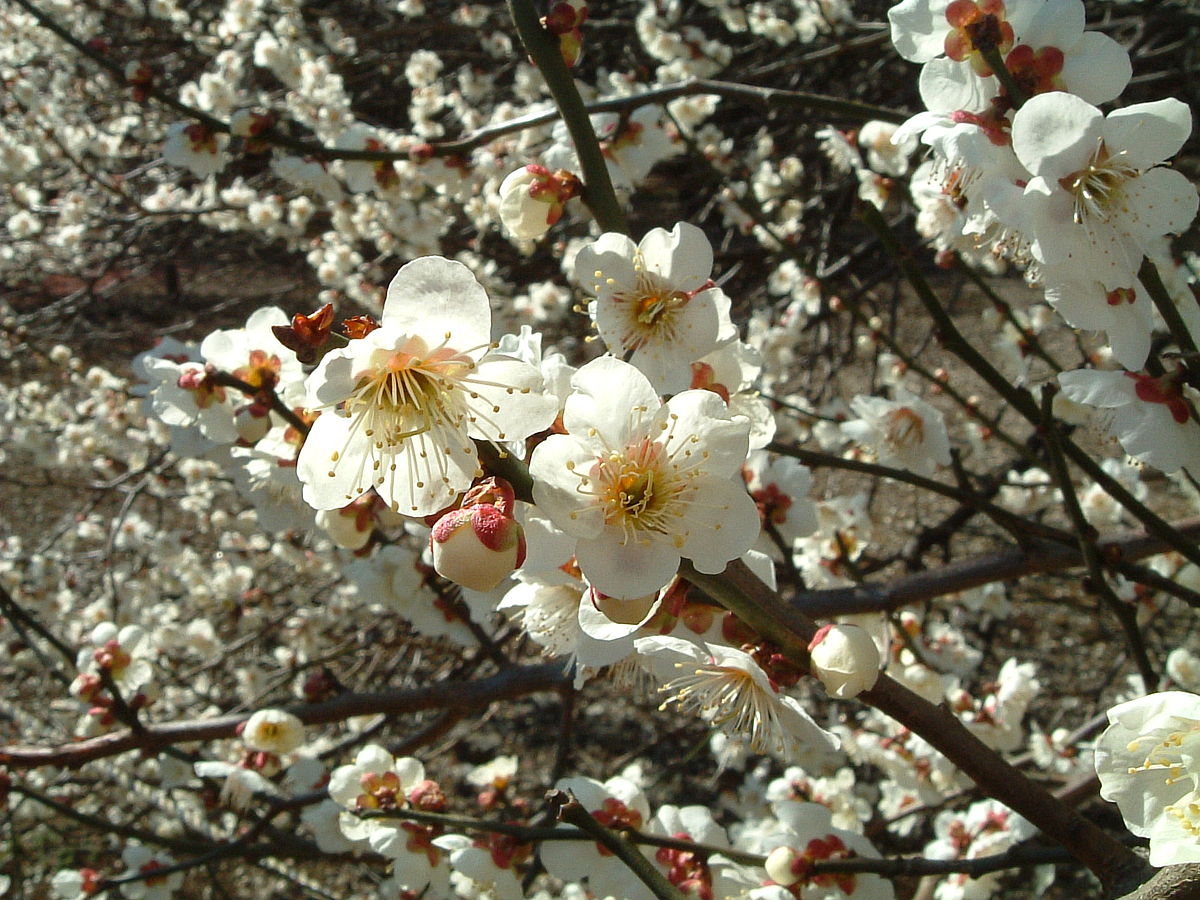Shinto, the ancient, indigenous religion of Japan, is all about appeasing the spirits and gods to ensure prosperity and avoid harm, and the tens of thousands of shrines that dot the countryside are veritable monuments to anxiety and guilt. Some of these potentially dangerous spirits include the souls of humans who were treated shabbily during their earthly lives. A great example is "Tenjin-san," the spiritual incarnation of Sugawara no Michizane, a ninth-century egghead who got on the wrong side of the powerful Fujiwara family in Heian (the capital city now known as Kyoto).
Michizane was, by legend, an unsurpassed scholar of Chinese as well as a great poet and calligrapher. He chose as his symbol the plum blossom, a gentlemanly flower then newly imported from China. Michizane became a favorite of Emperor Uda, who appointed him Minister of the Right. Alarmed that someone outside their family should be given so much power, the FUJIWARA plotted to have him lead the hazardous embassy to China. When he refused, they dispatched him to "govern" Dazaifu, a remote outpost hundreds of miles to the south on the island of Kyushu. As he tearfully quitted the capital for the last time, he bid farewell to his beloved plum:
If the east wind blows this way
Oh blossoms of the plum tree
Send your fragrance to me!
Never forget the Spring
Even though your master is no longer there!
According to legend, the loyal plum tree uprooted itself and flew to Dazaifu to join its master.
Michizane died two years later, some say of homesickness. An ox, drawing the funeral cart, collapsed in grief on the way to the cemetery, and it was decided that Michizane's remains should be buried on the spot. In the years that followed, disasters befell the people who had brought about Michizane's downfall. An ominous black thundercloud approached the imperial palace and struck a Fujiwara official dead. The incident left the emperor (Uda's son, who had conspired against Michizane) so shaken and ill that he had to retire. A priest dreamed that Michizane's vengeful spirit was behind the wave of disasters. Seeking to assuage it, Michizane's old foes promoted the angry ghost to Minister of the Left.
Later, he was deified and a splendid shrine, the Kitano Tenman-gū, was built in Kyoto in his honor. Michizane's mausoleum at Dazaifu was turned into a shrine as well. Michizane's deified spirit, known as Tenjin, worshipped here and in 10,000 sub-shrines across Japan, has since granted protection to poets, calligraphers, and millions of Japanese students praying for success in their high school and college entrance examinations.
February is a great time to enjoy the milder climate and plum blossoms in Kyushu. Join the 7 million Japanese students who visit Dazaifu Tenman-gu, the shrine to Michizane.
A wonderful side-trip from Dazaifu is Koishiwara, a picturesque mountain village settled by Korean potters who were kidnapped and brought to Japan in the 16th century. The hamlet resounds with the pounding of clay mills, powered by a rushing stream that runs alongside the narrow main street. You'll want to leave plenty of room in your luggage for the beautiful, rustic pottery!
If you can't make it to Dazaifu in February, you can always pay your respects to Tenjin at his shrine in Kyoto, which bursts to life on the 25th of every month with a sprawling flea market.
For details, consult Gateway to Japan, Digital Edition.



